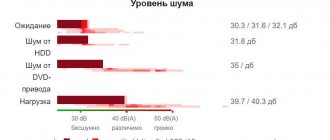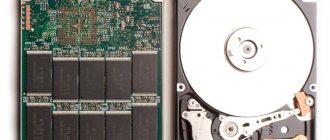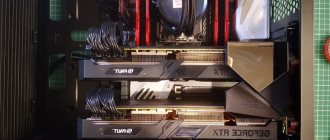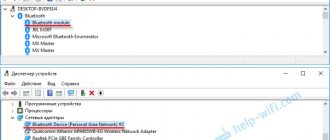What we pay for - optional intro
When you buy a product, what do you pay attention to first? That's right, first on packaging, then on content and only then on price. In the computer world, the opposite is true, and practically no attention is paid to the packaging of components (i.e., the case).
Usually, when a person wants to buy a computer, the case is in the very last position on the list of components, except perhaps before the mouse and keyboard. Here the following logic is most often followed: “first, the most powerful video card, then a processor with at least 4 cores, 6 GB of memory, and for the rest, some simple case.” Those. Usually normal people are willing to pay for the content, not the wrapper. In part, this position is correct, but here the wrapper is not just a beautiful candy wrapper, the case is a guarantor of the safety, stability and comfortable operation of the entire computer hardware.
A banal life example
Recently I witnessed how a friend of mine saved money on an “iron Felix” - a body. He took a more expensive video card, a faster processor, a lot of memory, and decided to pack it all into a cheap (noname) case. What do you think happened? That's right, trouble came from under the table: strange burning smells, melting of conductors, overheating of the CPU and other “saved” bonuses began to appear.
Therefore, in order not to throw money away, you need to plan your computer budget wisely and approach the purchase of the “packaging box” of your components – the case – wisely. We'll talk about the latter later.
Installation, maintenance and care
A correctly selected housing should fit into the location chosen for it and be convenient for use. For floor-standing enclosures, it is desirable that there be clearances of at least 100 millimeters between the casing and the walls of the apartment (furniture compartment). This clearance will ensure sufficient air flow to the air coolers. Do not install the computer near radiators. This will mean that you simply threw away money on coolers or water cooling.
Unlike the “filling” of a computer, which is regularly inspected, cleaned, vacuumed, and parts replaced, the case does not require special care. It is enough to wipe the painted surfaces of the walls and the front plastic panel with a damp cloth. Fan deflector slots and corrugated surfaces are vacuumed during system unit maintenance.
How to choose a case and what to focus on
So, first of all, it’s worth saying that there are no norms, canons or ideals in hull building. Therefore, you shouldn’t be fooled by bright phrases – the best, ultra-modern, etc., all this is heresy. If we look at the technical side, you need to keep in mind (keep in mind when purchasing) that the following parameters exist:
- Case type (form factor, size);
- Material;
- Cooling system (coolers/fans);
- Structural elements, fastening;
- Appearance, design, gadgets.
Let's go through and analyze each parameter separately, but first, let's determine in person the main structural compartments/departments of almost any case. Actually, having removed the cover of your system unit, you can find a lot of dust inside the following niches for installing computer elements (see image).
So, the standard is:
- Place under (1). In modern models it is often located at the bottom;
- Compartments for installing flexible drives (2). A rarity for many cases;
- Cavity for installing the motherboard (3);
- Processor niche with cooling system (4);
- Connector for installing a video card (5);
- Peripheral connectors (mouse, keyboard, sound, hubs, etc.).
Now let's move directly to the parameters.
System unit weight
The weight of the case is not the most important factor for selection. Having chosen a permanent installation location, the system unit is rarely moved to another location. A typical ATX case weighs about three kilograms. But for gaming and professional FullTower towers, the weight of the case with pre-installed equipment reaches 20 kg or even more. For office use, the system unit may require frequent movements. This application requires the selection of a housing on wheels. Rubber tires on wheels are desirable; plastic is less durable.
Type of shell
The modern computer case market is represented by many models, but there are certain standards in accordance with which they are produced. These standards are embedded in the so-called form factors, which ultimately determine the size of the computer case.
The following standard housing sizes exist:
- Mini-ITX;
- Micro-ATX;
- ATX;
- EATX;
- XL-ATX;
You can also find the following classification of buildings (tower, as they are called):
- SFF (Small Form Factor) – micro;
- Mini Tower – mini;
- Middle Tower - average;
- Big Tower - big;
The difference between case standards lies in the different size range of motherboards designed for a given case. To estimate the dimensions, it is convenient to use the table (see image).
The visual size range is clearly demonstrated by the following image.
I think there is no need to say that the main criterion for choosing the type of case depends entirely on the tasks that you set for your computer brother. Those. mini and micro ATX are ideal options for unassuming office users, for whom their iron friend should simply fit well into the interior (without taking up much space), and, if possible, do the “hard” work in the form of “open-close-save” a document and other office fun :).
What to start from
If your goal is a moderately solid and productive unit, then ATX is just what the doctor ordered. Well, the most trump card option for those who like to be more nimble is an XL-ATX standard case (aka Full Tower). As I already said, the main criterion for choosing one type of case or another depends on the “metrics” of the motherboard that you want to place there to perform the corresponding tasks. Also, the size of the case directly affects the quality of cooling inside, and therefore the lifespan and performance of all components.
Note:
- Mini-ITX are the smallest, usually come with a built-in low-power power supply (up to 350 W) and are designed for inch-sized boards.
- Micro-ATX is a typical representative of desktop solutions for home users. It has slightly more intelligible dimensions and also often comes with a built-in power supply with a power of 400-500 W. In general, it allows you to build quite satisfactory software on your site.
- ATX - often sold without a built-in power supply and gives the user complete freedom of expansion.
- EATX and XL-ATX are an excellent, high-performance (including server and powerful gaming) solution for connecting several graphics subsystems and computing cores.
Let's move on to the “material” component of the case.
Criterias of choice
When choosing a case, you should consider certain criteria:
- size;
- CPU fan height;
- maximum video card length;
- places for installing fans.
Types of buildings. Having opened a page with system units in an online store, a person will see thousands of design options for essentially the same device. However, despite all these models, they are divided into two categories: horizontal placement method or vertical one. The first type was actively used in the first computers, which is worth recalling the DVK-2 microcomputer. Today, this type has found active application for use in home theaters. Therefore, the market is filled with system units with a vertical form factor, which is called “Tower”. Depending on the size, they come in three types:
- MiniTower. Used to create a portable computer. The main advantage, which is also a disadvantage, is the small dimensions of only 178x432x432 mm. In this regard, only mini-type products can be placed inside. In addition, it is almost impossible to maintain optimal temperature conditions in such devices;
- MidiTower. Slightly larger than the previous version: 183x432x490 mm. It is actively used among users who prefer small devices, but with the ability to install all computer components. Maintains optimal temperature conditions;
- BigTower. This option is used to create a “gaming monster” or a productive device. It can easily accommodate video cards that occupy several expansion slots, and there will also be additional space for placing cooling devices. Its dimensions are 190x482x820 mm. The only drawback of this solution is the high cost and space required. Therefore, such models are found only among advanced users and pro players.
Case size. Computer cases have their own scale for determining sizes. There are 4 main categories: Full-Tower, Mid-Tower, Mini-Tower, Mini-ITX. They differ in the size of the motherboard that can be installed. For example, the largest MPs have the EATX form factor and are 13 inches long. A full-tower case can fit it inside, just like smaller motherboards. One of the most popular cases are Mid-Tower cases. They accommodate ATX and M-ATX boards with a margin of size. Some specific models allow the installation of EATX boards. Mini-Tower and Mini-ITX cases are suitable for compact Mini-ATX motherboards. At the same time, there are significant restrictions on the possible size of the video card and processor cooling system. It will no longer be possible to install a giant “tower”.
Space for a cooler. Processors with high heat generation require a decent cooling system. Air coolers can protrude significantly above the plane of the motherboard, creating problems when assembling in small cases. When choosing components, you should carefully compare the width of the case and the space required to install the cooler. A liquid cooling system can help install a productive system in a small space, but its operation and installation has certain nuances.
Maximum video card length. Mass-produced modern video cards are quite compact and fit into almost any case. But the top solutions at the moment remain hot, for which reason manufacturers install a large, efficient cooling system with long power circuits on them. When choosing, you should look at the characteristics of the case and compare the maximum length of a possible video card with the required one.
Places for installing fans. Computer cases have a predetermined maximum number of fans. This is important for systems with high heat generation for proper distribution of air flow. This criterion should not be neglected, since installing additional inexpensive case fans can gain several degrees of gain from the video card and processor.
Housing material
It would seem that it makes no difference what the case is made of, not paper, but oh well. But no, the material is important, because it must provide not only high-quality cooling, but also a certain degree of protection from mechanical damage and vibration. Most often, the body material of premium models (with a price of 8 thousand rubles) is a metal such as aluminum.
It is he (not counting copper) that has a good ability to dissipate large amounts of heat. You shouldn’t think that if the material is not aluminum, then the case will not cope well with its tasks, not at all. Most models in the mid-price (mass consumer) segment are made from special SECC steel - steel coated with a galvanic zinc solution.
An important point when purchasing will also be the build quality and the thickness of the case walls themselves. Regarding the first, it should be said that you should not buy (what seems at first glance) all-metal cheap Chinese cases. Most often, the so-called noname models are made from low-quality stamping, and the build quality leaves much to be desired, i.e. There are various backlashes, vibrations and gaps due to the fact that the housing components are not tightly fitted to each other.
Note: It is not entirely correct to think that the entire body is solid metal; you can often find plastic elements in the design of various panels, clamps, and fasteners - this is normal.
Wall thickness is also a significant parameter. If it is less than 0.5 mm, then most often it is not worth paying attention to such a case, because at the slightest vibration the rumble will be such that no earplugs will help. Therefore, try to choose the thickness of the case walls from 0.5 to 1 mm.
The best cheap PC cases in terms of price-quality ratio
COUGAR QBX Black
Cougar demonstrates another solution to the problem of access to components in extremely compact cases for mini-ITX boards: here the left wall (by the way, both side walls have large grilles, and the front panel is a “monolith”) tilts up along with the fan and drives ( and you can place one 3.5-inch HDD and two 2.5-inch SSDs on it). Another 2.5-inch drive can be mounted on the back side of the partition on which the motherboard is mounted, but this is a last resort: the optimal configuration for ease of use involves placing the drives on the lid, and access to them is simply excellent. So, how does this all work out? Two “one hundred and twenty” can be installed at the bottom of the case, above the easily pulled out mesh filter. Here they will be just right, since the video card will be placed above them, which will receive fresh air in sufficient volume (but, however, the dust cover will have to be cleaned with enviable regularity). It is necessary to take into account that the video card (maximum length is 350 mm) is located at the very bottom, and multi-slot “monsters” simply will not fit here. Although why build a compact mini-ITX computer with such a video card? The front 80mm fan draws air through the side of the front cover, two can be placed at the top, and one 90mm fan can be placed at the back. The power supply is located unconventionally - between the front wall of the case and the motherboard. In this case, you need to pay attention to the location of the socket on it: the top of the “triangle” formed by the contacts should look up, right or left, but not down (if you look at the power supply with the fan turned up), since otherwise the internal cable cannot be connected to it , bringing out a socket for connecting power to the usual place on the rear wall. The maximum height of the processor cooler is small, so it might be better to use an AIO water cooler for the processor, installing its radiator on a hinged cover (the possibility of such an assembly is directly indicated by the manufacturer). However, for hardware with high heat generation, the “blowing” here is still not enough, especially when you consider that the front fan is only an “eighty” fan. But, after all, it's mini-ITX!
Advantages
- Ease of access to storage devices
- Air supply with two 120mm fans directly to the video card
- Compactness
Flaws
- Rapid clogging of the lower dust filter
- Weak purging of the internal volume
Deepcool Matrexx 55 MESH Black
At this price, the Martrexx 55 has really high chances: the case presented a year ago sports a side wall made of four-millimeter tempered glass, accommodates 370 mm video cards and processor coolers up to 168 mm in height, and is perfectly ventilated - up to three “one hundred twenty” or even “one hundred forty” can be installed in the front ", two fans - on top, one - on the back (here - a maximum of 120 mm, in contrast to the front and top walls). The dimensions of the case also do not interfere with the “dropsy” installation - the refusal of baskets behind the front panel makes it very free. There are no fans included in the kit, which is correct - in a budget case they would still be far from the best, but here the buyer himself will decide how many and what kind of “Carlson” he needs. But let's talk about the unpleasant stuff. The fact that the case is stamped from thin metal is understandable and expected, but the non-removable dust filter on the front panel is already overkill; it can only be used to vacuum the computer from the outside. The dust filter under the power supply is frameless, so picking it out and putting it back will be another task if the system unit “lives” on the floor. There are not many storage baskets - two by 3.5 inches, two by 2.5. A raid array with high redundancy will not fit here... but, in fact, most of the “target audience” of this case do not know what RAID is.
Advantages
- Not a bad design
- Excellent interior ventilation
- Ability to install tall coolers and long video cards
Flaws
- Primitive dust filters
- Few storage baskets
Thermaltake Versa H18
Thermaltake Versa H18 CA-1J4-00S1WN-00 case.
It has a Micro-Tower form factor and is designed for high-performance gaming builds in a compact form factor. Side acrylic glass is installed for a stylish build. The lower position of the power supply allows for improved air circulation inside, and the presence of space with convenient outlets behind the motherboard provides simple and convenient Cable Management. One branded 120mm Thermaltake fan is already installed with the case. The front panel has two USB 2.0 ports and one USB 3.0, as well as two 3.5 mm Mini-Jack ports for connecting audio devices. Specifications:
Mini-Tower, without power supply
Form factor: mATX, Mini-ITX
Window on the side wall
Number of internal compartments: 3.5: 2
Number of internal compartments: 2.5: 2
Advantages
- plexiglass side cover
- built-in 120mm fan
- compact size
- lightweight cable management
- bright and stylish appearance
- ease of assembly
- presence of dust filters
- simple cable management
- easily soiled glass lid
- few ports on the front panel
Flaws
- not identified
Cooler Master MasterBox Q300L
A very interesting design for a computer case, which attracts not only external minimalism, emphasized by discreet ornaments, but also functionality, unexpected for a simple-looking “cube”. Let's start with the anti-dust filters, covered with the same ornament: they can be easily removed (magnetic fastening), revealing a huge perforation area, which allows you not to limit yourself with the power of the supply ventilation. Next, let's take a closer look at the panel with connectors - it is also not simple, but can be installed in three positions on either of the two sides of the case. And the case itself, finally, allows you to install it either upright or flat. Well, the transparent cover will definitely be of interest to modding enthusiasts who don’t like to hide beautiful “hardware” away from view. In a word, in terms of functionality, the case turned out to be simply excellent, and even the ability to install a powerful cooling system (up to the point of “dropsy”) will not be superfluous if you want to build a compact, but at the same time high-performance PC. The options for installing drives here are, of course, more limited than in “towers,” but a set of two 2.5” slots and one 3.5” is sufficient to assemble a standard “SSD for the system + HDD for file storage” configuration.
Advantages
- Advanced cooling
- Quick-release filters
- Design
Flaws
- The iron is a bit thin
- Only two USB ports on panel
Aerocool AeroEngine RGB
The Aerocool AeroEngine RGB model attracts with its aesthetic design and reasonable price tag. The embossed design of the front panel goes well with powerful hardware and gaming systems in particular. In addition, the manufacturer took care of the presence of a high-quality fan with good LED lighting. There are 14 RGB design types available. At the front you can find large ventilation holes that promote improved air flow. The side panel is made of tempered glass, allowing you to view the contents of your build. Additional cooling is guaranteed by a thoughtful two-chamber design.
Advantages
- two body versions
- space for coolers
- number of lighting options
- presence of tempered glass
Flaws
- easily soiled sidebar
Cooling system or “Carlson” in the case
Of course, the case is not only a protector from damage, but also a ventilation casing for all components of your PC, providing the necessary “coolness” to its hot elements. However, the rule “the more wind blowers in the building, the better” does not work here. It all depends on the competent organization of the ventilation process (air circulation) by installing coolers in the right locations.
In other words, 4-5 factory fans are not always a guarantee of high-quality cooling of computer internals, because ventilation is created not by the number of “turntables”, but by air flows. And if the latter intertwine, collide and interfere with each other, then there is no effective process for removing hot air.
The conventionally common ventilation scheme for housings is the following (see image).
In this scheme, one or several large “slow” fans are installed at the entrance, drawing in fresh room air. At the outlet (the rear wall of the case) there is a slightly smaller but more “fast” fan that works for blowing out.
This design allows you to create decent thrust in a closed space and the body begins to work like a large cooling turbine, i.e. cold air, drawn through all the hot components, cools them and is thrown out.
Noise insulation
Soundproofing of the housing is a problem that has not yet found an effective solution. To improve sound insulation, internal vibration-damping coatings on the side walls, top panels, and rubber HDD hangers are used. Manufacturers of high-quality cases complete them with vibration-damping pads for all coolers and hard drives.
But it’s impossible to completely cover the case with noise-insulating materials; the ventilation grilles of the coolers get in the way. At the same time, running fans are the main source of noise. So there is no alternative to increased noise when choosing air cooling for a system unit.
About the knobs separately and how to choose a body based on them
This standard design is often supplemented with “twisters” at the top and side walls of the housing, which also work for injection. In general, to create a high-quality cooling environment inside the case, you must follow the following simple rules:
- More twists does not mean better;
- The air flow must be integral and unidirectional, without being broken up by various additional flows;
- Hot air always rises up, and cold air goes down, so you should not place the vertical block on its side;
- Loose cables in the housing can disrupt the movement of air masses;
- Large cooler blades are better than small ones, because... create more air flow at fewer revolutions.
It is also worth paying special attention to the fans themselves, or more precisely, to the volume of air that they can “pump” into the case per unit of time (minute). This technical parameter is called CFM (cubic feet per minute). The volume of circulating air inside the housing must be constantly updated. And to calculate based on the dimensions of the case what kind of fan it needs, you need to resort to simple mathematics:
- Multiply the parameters (length, height, width) of the case in mm and find out its area;
- Determine the CFM of the fan.
Let's say for a case with dimensions 253x502x563 mm, the volume is 2.52 cubic meters. ft. To refresh the air every two seconds, you need to set the fan to 70 CFM. Very often inside the case you can find large air vents in the form of tubes on the side surface for cooling the processor (see image).
So, the benefits of them are rather doubtful, but they introduce their “interference” into the harmony of the air flow, because block the natural circulation of air, and in exactly the same way as unsheathed wires do. It is also worth mentioning a not particularly necessary component of the case ventilation system – dust nets.
Their effectiveness is extremely low, because literally after 2-3 months of active use of the computer, they simply become clogged with room dust, and this again interferes with normal air circulation and contributes to overheating of the computer components. In general, such pipes are rarely really effective.
By the way, we talked about how to properly deal with dust inside the system unit in our article called [3 in 1 “Large cases” or “Cleaning the dust” or “What is what in the computer”], so read and do not create dust
Power supply locations
The power supply in old and budget new cases is installed in the upper part. This is the hot part of the system unit. The heat generated by the video card, processor and other parts rises. The cooler of the power supply is directed downward and works on blowing, so it is not cooling, but overheating.
And overheating is harmful. The load on the hardware during heavy programs or games leads to the generation of even more heat. The unit heats up more, the power circuits begin to work unstable, drops and failures occur, which has a detrimental effect on the processor and video card. With such problems, the system system as a whole slows down.
Taking a more powerful block does not solve the problem. It is better to take a PC case with a bottom mount for the power supply. It will not allow hot air from components to pass through it. On the contrary, it takes in and cools air from the room, so it will last for many years.
Interesting article: How to enable the on-screen keyboard: 3 alternatives
Fastening: tongue and screw. Case ergonomics
It would seem that what the screws have to do with it, but that’s what it has to do with it. Very often, in cheap cases, everything is fastened in the old fashioned way with the help of assorted screws, the replacement of which turns into dancing with a tambourine. I unscrewed 5 things, while I was screwing 3, the fourth rolled away, and one was completely lost in the dark depths of the case, I went to look for it (I took a flashlight) and along the way got scratched on the steel edges of the panels, how do you like this prospect?
Manufacturers of high-end cases have long solved such problems by using a system of plastic rivets and fasteners, as well as installing sleds for hard drives that slide out on wheels. Everything is flexible, movable and convenient (see image).
Such things (plugs, additional fasteners, clips, shelves) have a positive effect on the ergonomics of the case or, in other words, its functional “convenience” for the user. Those. ergonomics, if you like, is the expandability of your body, its ability to easily transform during modernization, including changing its external and internal appearance.
Routing cables inside the case is also an important aspect of ergonomics, because how easily they can be hidden also determines the cooling inside the case. On the other hand, the wires should always be within walking distance if you need to connect a new drive or disk, and not cause the user to experience a tug-of-war syndrome. This is when the wire does not reach the device socket, but we still pull it there, because... There are no more options.
Voting for the best computer case
What computer case would you choose or recommend?
Fractal Design Define XL R2 Titanium
0.00 % ( 0 )
Thermaltake Core V51 TG CA-1C6-00M1WN-03 Black
0.00 % ( 0 )
Ginzzu ML600 Black
0.00 % ( 0 )
Sharkoon PURE STEEL Black
0.00 % ( 0 )
Phanteks Eclipse P400 Tempered Glass White
0.00 % ( 0 )
1stPlayer DK DX Black
0.00 % ( 0 )
MSI MPG Gungnir 100D
0.00 % ( 0 )
Phanteks Eclipse P300 Tempered Glass Black/Red
0.00 % ( 0 )
AeroCool NightHawk Black
0.00 % ( 0 )
PowerCase Attica Mesh Black
100.00 % ( 2 )
Deepcool Matrexx 50 Black
0.00 % ( 0 )
Zalman R2 Black
0.00 % ( 0 )
Appearance, design and bells and whistles
What user doesn't like to show off his body? Yes, one that doesn’t have this case :). We are all human and we all want to surprise someone with something. For some computer users, this “surprising” feature is the design of the case. Here's an example (see image).
It is worth understanding that design is a purely individual thing, many are ready to sacrifice functionality for the sake of various flashing lights, backlights and nozzles, and this is a personal matter for everyone. However, do not forget that a case in strict colors with a minimum number of lights, sensors and other tinsel will always look stylish and elegant.
Among the necessary design gadgets, it should be noted that there are various types of connectors on the front (or top) panel of the case. By default, the following are always displayed: headphones/microphone and USB. Those who clearly don’t have enough of this “gentleman’s set” can easily take a case with a “spare”, which has an eSATA port for connecting a portable hard drive, a cooler rotation speed controller and a couple of modern ultra-fast USB 3.0 ports (see image).
Phew, it seems like we’re done with the practical-theoretical part, now let’s summarize in order to assimilate all the material presented as well as possible and learn how to choose the right PC case the first time.
Equipment racks
When assembling a system unit, you will also have to place a hard drive (or several), a solid-state drive and, possibly, an optical drive somewhere. Although the latter type of drive is obsolete, and the speed of the Internet allows most users to quickly download everything they need from the network, many still use it.
Naturally, there should be enough racks to mount all the components, but it’s better to take them with a reserve (remember about the upgrade!).
Typically these racks are located at the front of the chassis. Again, don’t forget about the video card - will the racks interfere with its installation? Ideally, the racks are not tightly soldered, but removable: the user can add as many as needed for a specific configuration.
Frequently asked questions and frequently answered questions by choice
So, remember the following tips, and such an event as buying the right case will become a habitual activity for you :).
- Decide on the tasks that your PC will solve (office, gaming, etc.);
- Based on the tasks, select the required dimensions of the motherboard and the case for it;
- The material of the housing walls should be from 0.5 to 1 mm thick;
- Do not purchase non-name models, take a closer look at the professionals in their field: Cooler Master, Zalman, Inwin;
- A cooling system of 3-4 fans is quite enough for effective heat removal;
- Do not skimp on the block, it must have significant power, otherwise your filling will sooner or later be covered with a copper basin;
- The best location of the power supply in the case is at the bottom;
- Make sure there are plastic elements for installing the hard drive and drives;
- Try to buy a body that is free of various screws and tongues;
- Pay attention to the presence of additional connectors on the front panel of the case;
- Remember, a high-quality case begins its “price offer” from an amount of 6,000 rubles.
These tips will help you make the right choice!
In a nutshell, something like this.
Top PC case manufacturers
For your information! There are many manufacturers of computer cases. Top brands are presented below:
- Fractal Design. Swedish brand of computer components, including PC cases. The equipment of this company stands out for its maximum noiselessness and attention to detail. Cases from Fractal Design will decorate any room, as they are made in a laconic and strict design.
- NZXT. An American brand that produces efficient cooling systems and high-quality computer cases. The company uses the most advanced solutions in the production of devices. NZXT branded cases will provide comfort and pleasure when using and upgrading them.
- Cooler Master. Taiwanese brand with a worldwide reputation. Specializes in the production of cases, power supplies, cooling systems and gaming peripherals. Cooler Master computer cases feature an original design and advanced ideas in terms of component placement.
- DeepCool. Chinese company producing computer components. Its products are famous for their good quality at very affordable prices. Computer cases from DeepCool also feature thoughtful design and modern design.
Where is the best place to buy a case?
First of all, we recommend three stores with approximately equal degrees of quality:
- GearBest is for those who are not afraid to buy abroad and save money. There are many interesting SSDs of the “Chinese” type, several popular brands, and in general a pleasant store where there are constant promotions and so on;
- JUST is perhaps the best choice in terms of price-quality ratio of SSDs (and not only). The prices are quite reasonable, although the range is not always ideal in terms of variety. The key advantage is the guarantee, which really allows you to change the product within 14 days without any questions, and in case of warranty problems, the store will take your side and help solve any problems. The author of the site has been using it for at least 10 years (since the time when they were part of Ultra Electoronics), which he advises you to do;
- OLDI is one of the oldest stores on the market; the company has been around for about 20 years. Decent selection, average prices and one of the most convenient sites. Overall a pleasure to work with.
The choice, traditionally, is yours. Of course, no one has canceled all sorts of Yandex.Markets, but of the good stores I would recommend these, and not some MVideo and other large networks (which are often not only expensive, but defective in terms of quality of service, warranty work etc.).











